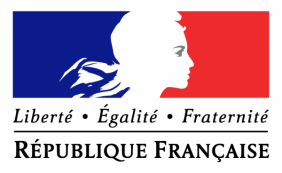
ODF format recommended by DINSIC for public administrations
26/04/2016
The new version of the general interoperability reference guide promotes the Open Document Format (ODF) for public administrations, listing along the way the various defects of Microsoft’s OOXML.
Microsoft’s format under fire
Here’s some news that’s likely to get the proprietary vendor’s hackles up! Version 2 of the RGI (France’s National Interoperability Framework) was released a few days ago. The world of open source will have no cause for complaint on reading the PDF file. The document clearly recommends the use of ODF for office documents at public administrations, grazing Microsoft’s OOXML format along the way, which it deems to be overly complex and closed, particularly in terms of governance of the standard. That format has been placed on the watchlist of the Interministerial Directorate for Digital and for State Information and Communication Systems (DINSIC). Microsoft’s delay in making its office automation suite completely OOXML compatible appears to be the root cause of its relegation to the sidelines. In fact, the Office Suite has only fully read and write compatible with the format since 2013.
A platform State
Interoperability appears to be the key criterion in this new framework: “[A]n interoperability profile encompasses a series of standards and recommendations for predefined use cases. The easy assimilation of this framework requires focusing on a few main key uses. The choice of standards for a given context also needs to be limited.” This “platform State” strategy, explained in the document, clearly infers the maintenance of a contained number of solutions whose versatility makes them suitable for multiple use profiles. In seeking to limit the number of solutions recommended for public administrations, DINSIC has also attempted to reduce the State’s technical debt which is the result of the proliferation of the possible solutions that can be used in each given context and the maintenance work associated with each of them.
Wikipedia as a source for the framework
The decision to use Wikipedia as a documentary source for the framework was as surprising as it was practical, reminding us of DINSIC’s refreshingly iconoclastic behaviour in respect of the usual ministry patterns. Rather than reinventing the wheel and risking the creation of confusion, the descriptions of the solutions examined in the RGI are based on the community site’s sources, whose methodologies at the end of the day are quite similar to those employed to build the framework. For each solution, the RGI presents a brief summary and a link to its ad hoc Wikipedia page. Although documents traditionally evolve separately, this structure means that the RGI will always be as close as possible to the latest developments.
Latest news
- 13/02/2017 // CERN expands its cloud with OpenStack
- 05/01/2017 // OroCRM and OroPlatform 2.0
- 27/10/2016 // Very blurry role for open source software in the Administration
- 10/10/2016 // Open source: Report on employment in Europe
- 26/09/2016 // WordPress still the top target of cyberattacks
- 08/09/2016 // Feedback on DevOps
- 26/06/2016 // According to one commissioner of the CNIL (National Computing and Freedom Commission): free software is the "only viable alternative"
- 16/06/2016 // The INSEE and the DREES share the code for the Ines model
- 24/05/2016 // Recruiters looking for open source skill sets
- 19/05/2016 // Linux scheduler found inadequate !



